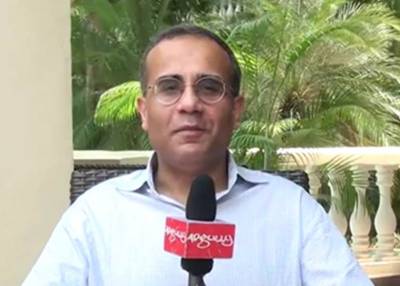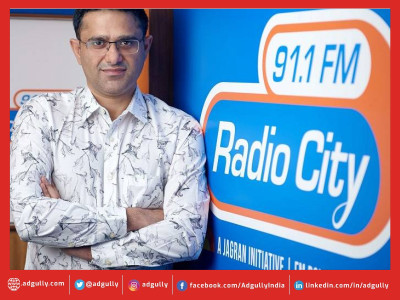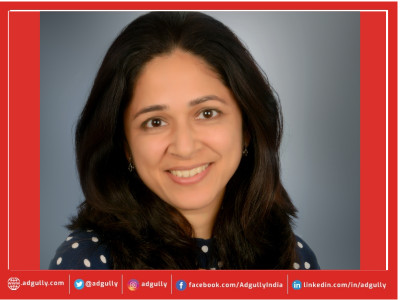AgTalk | Think outside of yourself: VivaKi's Rishad Tobaccowala
Rishad Tobaccowala is Chief Strategy & Innovation Officer, VivaKi. He oversees innovation and reinvention efforts across all of VivaKi’s agency networks. He has helped VivaKi’s global businesses become an established leader in digital media and marketing. In 2005 he was named by Business Week as one of the top business leader for his pioneering innovation and also dubbed as one of the five ‘Marketing Innovators’ by TIME magazine. In 2008 he was named as an industry legend by Ad Color and in 2009 conferred an Industry Achievement award at ad:tech for long term dedication and industry service. He also serves as an advisor to a broad range of companies.
Rishad Tobaccowala holds a bachelor’s degree in mathematics from Bombay University and an MBA from the Booth School of Business at the University of Chicago.
Adgully met Rishad Tobaccowala and following are some of the excerpts from the interview with him:
Adgully (AG): How would you define creativity? What according to you is the future of creativity?
Rishad Tobaccowala (RT): Creativity is connecting the dots in new ways that resonate. It needs to be meaningful with people, it needs to resonate with the times, connect with the culture and it needs to resonate with the history of the brand. You come up with ideas when you have no idea of the history of the brand and that becomes a problem. So you have to focus on the brand’s history, culture and people but by connecting the dots in a new way which is the main idea. The old dots were audio, video, graphic and word. I introduce three new dots. First what I call participation and because of social media participation becomes a part of creativity which means people can create or they can pass your creative messages. Secondly mobility helps you to know where somebody is and that is a new dot in creating messages. The third new dot is API or Application Protocol Interface the technology term which means that you can link to other forms of data and information. So now brands are linking to You Tube videos, Google Search results as part of the message they create and if you use these three dots you have totally seven dots. A great creative message can also be only one dot. So it is stretching what you can do.
Creativity in the future can be like words on paper. You are always moved by words on paper.
AG: With the eurozone crisis and there is no reforms by the Indian Government for sometime now how do you think it is impacting the advertising business in India?
RT: The advertising industry keeps growing globally at the size usually of global GDP or slightly ahead of the global GDP it rises 2-3%. That’s how much it grows a year. When Global GDP falls it definitely does not get affected and the first time the advertising market declined by 3-4% was in 2008. Today clearly the advertising market is slower in Europe but we just released our results and for the first quarter and our revenues in Europe are up by 3 ½ -4%. But in countries like the Middle East our revenues are up by 10% IN certain areas like digital revenues were up by 10%. I think overall advertising and marketing is going to enjoy a massive boom so unlike a lot of people who thinks that there are problems ahead there is a very positive future for advertising and marketing including investor markets basically because consumers are becoming empowered. The rate of change is really fast so you have to introduce and promote new products very quickly because products last for only a year and a half. So you have to continuously have a series of new business product launchers which need advertising and marketing. The challenges and the way it is done has become broader.
AG: Do you think there can be a double digit growth in Indian advertising business in 2012-13?
RT: The advertising industry according to my sister company Zenith is going to grow in the vicinity of 4-5% around the world. We are going to have double digit growth in certain countries like the emerging markets and in certain forms of digital media particularly social and mobile from smaller bases and we are going to see a double digit growth in a large component of search.
AG: What are the major steps you have taken to sail through smooth in this situation?
RT: So far we have sailed through the first quarter. Touchwood, we will keep sailing but you never know because the world keeps changing. What we have basically done is this. A long time ago our strategy was very much focused on two areas digital and approximately a little over 30% of our revenues comes from digital and it was focused on emerging markets. So if you consider digital plus emerging markets more than half of our revenues come from there. That way we diversified away from the slower areas. Secondly anticipating this we are very focused on two or three things which matter a lot and tend to forget, that is our business is only as strong as our relationship with and the strength of our client’s business. So we focused a lot on consumers and how they were changing. Also how we could help our clients through their business problems and this way we won market shares and the growth of these shares allowed us to continue to grow even though the category was flat.
AG: How much important is India as a market in your Global scheme of things?
RT: I would place India basically on two fronts. The first front as an existing market is clearly one of the ten or twelve larger ad markets in the world. It is also a top market with a lot of exciting creativity and a lot of young people. It is probably going to be one of the three most important markets as we move forward. It will go from top ten to top three. It’s going to be the top three for three separate reasons. Firstly, because of the size of the market, growth and large population growing even more. Secondly, young people and the use of technology basically means the entire landscaping of marketing is going to change and it allows us to come up and become the leader. The third reason being India is net exporter of culture. China too exports culture but theirs is an old culture. India however are exporting our old and current culture that is not only Bollywood and Salman Rushdie and other writers but it is basically fashion, music and in the advertising business think about it, you have cultural export, you have a young country with technology and a large country.
AG: It’s almost 50% of India is on mobile (as per the nos. of mobile connections) and mobile is no more a simple phone. How is your team in India gearing up to catch the mobile advertising wave?
RT: I believe that mobility will be involved in everything so what tends to happen is if you consider tablets and phones they are going to be the way we spend probably most of our time. Consuming media will be on tablets and phones. Only at home we will be watching media on TV. Even there you will be probably watching television and also be on a tablet at the same time. I don’t think the future of mobile is advertising as mobile, I think the future of marketing is mobile. I don’t think people want advertising on their mobile devices for two reasons. First because it is intrusive and secondly unless you on wireless systems you are going to be paying a lot of money for data and you don’t want to pay money to watch somebody’s commercial message. What you are going to do online is watch You Tube videos. The key thing in mobility is services. For e.g. it has to give me information about a restaurant and not an ad about the restaurant.
AG: Do you think that mobile as a medium has the capability to draw large spends like TV in India in the future?
RT: The dominant medium in the world for many years is going to be television. It will be the dominant medium but basically what will happen is Television will get social and it will become available on mobile devices like on my ipad. It will have underlined technology coming into it. Television is going to become mobile, magazine companies are going to become multi media companies those are going to be the changes but I don’t think people are going to be entertained through the mobile by itself.
AG: Any message you wish to give the young talents in India?
RT: I would say for the young media professionals of the India there are two things to keep in mind. First, please think that media is very broad, advertising and creativity is very broad. So you should be thinking very broadly because creativity whether it is in media or advertising or marketing is about connecting the dots. If you are not thinking broadly you are not seeing the dots, which is very important. Second be very very focused on the fact that the world is not necessarily like you particularly in India. So in India when you are a media professional you are an elite person in not a necessarily elite market. Even in the middle market, we define the middle class as people who have the income to spend. In some ways you have to very careful that you don’t take your own beliefs and say that is the person you are marketing to because that group of people is very small and that is the people you are seeing all the time so think outside of yourself that is very important.
Exclusives
MINUTES TO READ


















Share
Facebook
YouTube
Tweet
Twitter
LinkedIn